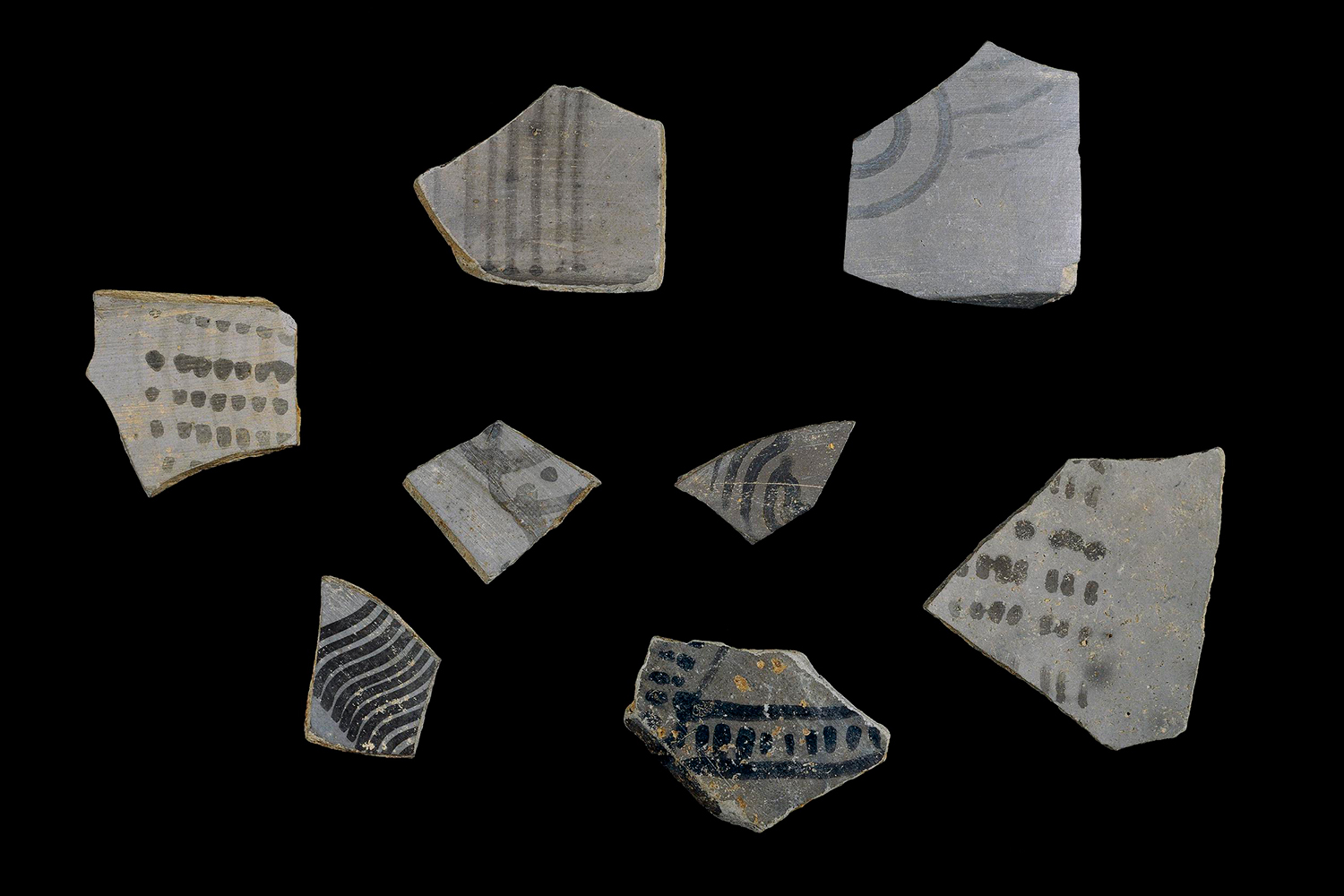ARTICLE
Painted Grey Ware Culture
Largely dated to 1100–400 BCE, with some sites dated to 1400 BCE, the Painted Grey Ware Culture was a post-Harappan material culture found primarily in the Indo-Gangetic plain, named after the finely made painted grey pottery found in the region.
The distribution of Painted Grey Ware sites ranges across the Indo-Gangetic divide, the Sutlej river basin and the Upper Gangetic plains, covering most of northern India and parts of eastern Pakistan. In India, the present-day states of Haryana, Punjab, Uttar Pradesh and Rajasthan have over 100 Painted Grey Ware sites, along with a few yields recovered from the Kumaon, Garhwal and Ujjain regions. Important Painted Grey Ware sites in India include Hastinapur, Alamgirpur, Ahichchhatra, Allahpur, Mathura, Kampil, Kaushambi and Shravasti in Uttar Pradesh; Noh, Jodhpura and Jakhera in Rajasthan; and Bhagwanpura in Haryana. At Bhagwanpura as well as Dadheri and Katpalon in Punjab, the Painted Grey Ware level overlaps with the Late Harappan level, whereas at other sites, the culture was found to succeed the Ochre Coloured Pottery and Black and Red Ware cultures, with breaks in occupation. In Pakistan, the sites are distributed across Cholistan, along the Hakra channel of the Ghaggar-Hakra river system. Although the Hakra channel dried out in the second millennium BCE, locations of the Painted Grey Ware sites indicate that a certain part of the river remained intermittently active, primarily during the monsoons.
Painted Grey Ware was made of fine quality clay and had smooth, even-coloured inner and outer surfaces, indicating a sophisticated firing technique. The objects were made on a fast wheel and shaped to an egg-shell thickness. Once hard, they were again turned on the wheel to trim and smooth the surface and finished with a thick black slip or painted with black and brown designs. The painted designs were primarily geometric, with motifs such as rows of lines, dots, dashes, circles, spirals, concentric circles and checks. Symbols such as the swastika and sigma were also found. The use of nature-based motifs was infrequent. At some sites, the pottery was decorated with stamped or incised designs. Although it lends its name to the culture, Painted Grey Ware pottery comprised only 3–10% of the pottery artefacts recovered within its assemblage and was found with other types such as Plain Grey Ware, Black and Red Ware and Black Slip Ware. The size and form of the objects and the relatively small yield have led scholars to suggest that Painted Grey Ware pottery may have been a luxury category of objects likely used by wealthy groups.
The most common objects associated with the culture were small- and medium-sized bowls, dishes and basins. Other artefacts include iron implements such as hoes, sickles and ploughs; terracotta figurines; copper objects, including bangles and a dish; semi-precious stones such as carnelian, crystal, agate and jasper; faience beads and bangles; bone points and needles; and ivory objects such as combs, buttons, arrowheads and mirror handles. The site of Jakhera was significant for crude terracotta figurines of a snake and male and female figures, recovered from what scholars believe was a ritualistic pit. Jakhera also yielded gold artefacts, including a spiral nose ring, a leaf-shaped ornament and wires.
Bhagwanpura and Jakhera also provided insights into the settlement styles of the culture. At Bhagwanpura, three phases in structural design were seen in wattle-and-daub structures, rectangular mud-walled structures and structures built of burnt brick, including a thirteen-room structure. The roads at Jakhera were paved with broken potsherds and there was evidence of a water channel and a bund, suggesting efficient water management practices. Plant and animal matter remains in the region also suggest that it was a largely pastoral and agricultural culture centred around rural settlements.
The appearance of Painted Grey Ware sites in the Mahabharata have led scholars to suggest the association of these sites with the epic, whereas other scholars have linked the culture with the Vedic Period and Indo-Aryan migrants. However, these interpretations remain debatable.
The Painted Grey Ware Culture was succeeded by the Northern Black Polished Ware culture, which is associated with the beginning of widespread urbanisation in the Gangetic plains, characterised by the emergence of the mahajanapadas.
Bibliography
Chakrabarti, Dilip K. India An Archaeological History: Paleolithic Beginnings to Early Historic Foundations. New Delhi: Oxford University Press, 1999.
Gupta, Vinay Kumar, and B. R. Mani. “Painted Grey Ware Culture: Changing Perspectives.” Heritage: Journal of Multidisciplinary Studies in Archaeology 5 (2017): 370–79.
Lal, B. B. “The Painted Grey Ware Culture of the Iron Age.” In History of Civilisations in Central Asia, Volume 1, edited by A. H. Dani and V. M. Masson, 412–31. Paris: UNESCO Publishing, 1992.
Mughal, M. R. “The Post-Harappan Phase in Bahawalpur Distt, Pakistan.” In Frontiers of the Indus Civilisation, edited by S. P. Gupta and B. B. Lal, 499–503. New Delhi: Indian Archaeological Society and Indian History and Culture Society, 1984.
Singh, Upinder. A History of Ancient and Early Medieval India: From the Stone Age to the 12th Century. New Delhi: Pearson, 2016.








